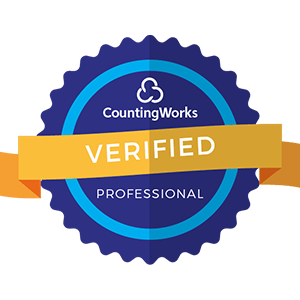
In the ever-evolving landscape of small and medium-sized businesses (SMBs), there's a new superhero in town: Human Capital Management (HCM) technology. But before you roll your eyes thinking, "Great, another tech buzzword," let's dive into why this could be the game-changer your business has been waiting for.
Picture this: A world where your employees are engaged, productive, and—wait for it—actually want to stick around. Sounds like a dream, right? Well, grab your coffee (or green smoothie, we don't judge), and let's explore how HCM technology is making this dream a reality for SMBs everywhere.

Before we dive into the solution, let's talk about the elephant in the room: employee turnover. It's the silent killer of small businesses, draining resources faster than that office plant you keep forgetting to water.
The cold, hard facts:
Ouch, right? But here's the kicker: much of this turnover is preventable. Enter HCM technology, stage left.
So, what exactly is HCM technology? Think of it as the Swiss Army knife for managing your workforce. It's a suite of tools that help you handle everything from payroll and benefits to performance management and employee engagement.
But here's where it gets interesting for SMBs: HCM tech isn't just for the big players anymore. It's becoming more accessible, user-friendly, and, dare we say, essential for businesses of all sizes.
Let's break down how HCM technology tackles the three pillars of employee retention:
Remember when employee engagement meant a yearly pizza party and a pat on the back? Those days are long gone (though we still love pizza). Modern engagement is about creating a continuous, meaningful connection between employees and their work.
HCM platforms often include tools for quick, frequent employee surveys. These "pulse checks" help you:
Pro Tip: Keep surveys short and sweet. Aim for 5-10 questions that can be answered in under 5 minutes.
Many HCM systems include features for peer-to-peer recognition and rewards programs. This isn't just about making employees feel warm and fuzzy (though that's a nice bonus). It's about:
Did You Know? According to a Gallup survey, employees who receive regular recognition are 5 times more likely to stay at their jobs.
With remote and hybrid work becoming the norm, HCM tech is stepping up to keep teams connected. Features like:
These tools help create a sense of community, even when employees are miles apart.
Here's a truth bomb for you: Employees don't just want a paycheck. They want growth, challenge, and the opportunity to build a career. HCM technology is your secret weapon in making this happen.
An LMS within your HCM platform can:
Mind-Blowing Stat: Companies that offer comprehensive training programs have 218% higher income per employee than those with less comprehensive training (Association for Talent Development).
Modern HCM systems are ditching the dreaded annual review in favor of:
This approach helps employees understand their progress and areas for improvement in real-time, rather than getting a surprise once a year.
HCM technology can help you create clear career paths for employees by:
Pro Tip: Use this feature to have meaningful career discussions with employees. Show them you're invested in their future, not just their present.
Now that we've engaged and developed our employees, how do we keep them from being lured away by the siren song of other opportunities? HCM technology has some tricks up its sleeve for this too.
Some HCM systems use AI and machine learning to predict which employees might be at risk of leaving. These tools analyze factors like:
Armed with this information, you can take proactive steps to address issues before an employee starts updating their LinkedIn profile.
HCM platforms often include tools to help you:
Reality Check: While money isn't everything, unfair or below-market pay is a fast track to employee dissatisfaction.
Modern HCM systems often include features to support work-life balance, such as:
By showing employees you care about their life outside of work, you're more likely to keep them around for the long haul.

Now, you might be thinking, "This all sounds great, but how can my small business compete with the big guys?" Here's the plot twist: When it comes to HCM technology, being smaller can actually be an advantage.
Food for Thought: In a small business, every employee has a bigger impact on the company's success. HCM technology helps you make every employee count.
Convinced that HCM technology is the way forward? Great! But before you dive in headfirst, let's talk strategy. Implementing HCM tech is like renovating your house—it's exciting, but you need a plan to avoid ending up with a kitchen sink in your living room.
Step 1: Assess Your Needs
Before you start shopping for HCM solutions, take a hard look at your current processes:
Pro Tip: Involve employees in this process. They often have insights into inefficiencies that management might miss.
Step 2: Choose the Right Solution
Not all HCM platforms are created equal. Look for one that:
Buyer Beware: Don't get dazzled by fancy features you'll never use. Focus on what will truly impact your business.
Step 3: Plan for Implementation
Implementing new technology can be disruptive. Minimize the pain by:
Remember: The best technology in the world is useless if your team doesn't know how to use it.
Step 4: Measure and Adjust
Once your HCM system is up and running, don't just set it and forget it:
The Golden Rule: HCM technology is a tool, not a magic wand. It's how you use it that makes the difference.

Before we wrap up, let's address the elephant in the room: Can technology really replace the human element in human capital management?
The short answer: No. And it shouldn't try to.
The Technology-Human Balance
HCM technology is incredibly powerful, but it's most effective when it enhances, rather than replaces, human interaction. Here's how to strike the right balance:
Words of Wisdom: The most successful SMBs use HCM technology to amplify their human touch, not replace it.
As we look to the horizon, it's clear that HCM technology will continue to evolve. Here are some trends to watch:
Crystal Ball Moment: The future of HCM tech isn't just about managing employees—it's about creating thriving, holistic work environments where both people and businesses can flourish.
As we reach the end of our HCM technology exploration, let's recap the key takeaways:
Remember, implementing HCM technology isn't just about keeping up with the Joneses (or the Googles). It's about creating a work environment where your employees can thrive, grow, and yes, actually want to stick around.
So, are you ready to take your SMB to the next level? The world of HCM technology awaits, and trust us, your employees (current and future) will thank you for it.
Final Thought: In the words of Richard Branson, "Take care of your employees, and they'll take care of your business." With HCM technology as your ally, you're well on your way to doing just that. Now go forth and revolutionize your workforce management!


